Brant: Imminent Departure of the Trojans
Annotations
Dido, with her face covered in grief, begs Anna to talk to Aeneas (416-36). Aeneas stands in a ship with some of his men, and looks remorseful, a sign that Anna will not be able to convince Aeneas to stay (437-449). In the top left, Aeneas's men prepare the ships for travel: one holds a piece of lumber and another holds an oar (397-9). At the top right, a man stands outside a temple while another man holding a sacrificial knife leads a pair of either pigs or cattle in the direction of the temple. (Katy Purington)
Woodcut illustration from the “Strasbourg Vergil,” edited by Sebastian Brant: Publii Virgilii Maronis Opera cum quinque vulgatis commentariis expolitissimisque figuris atque imaginibus nuper per Sebastianum Brant superadditis (Strasbourg: Johannis Grieninger, 1502), fol. 222r, executed by an anonymous engraver under the direction of Brant.



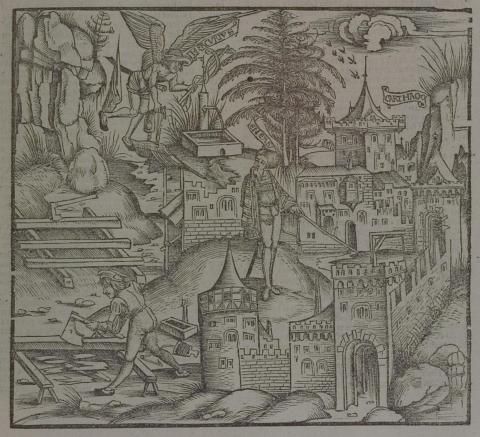
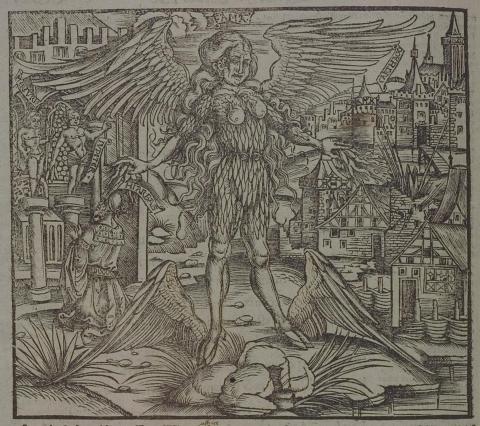
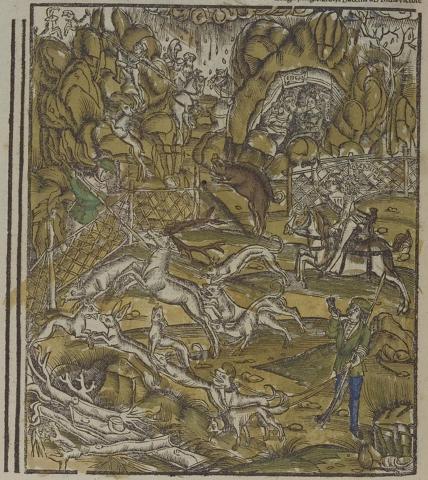
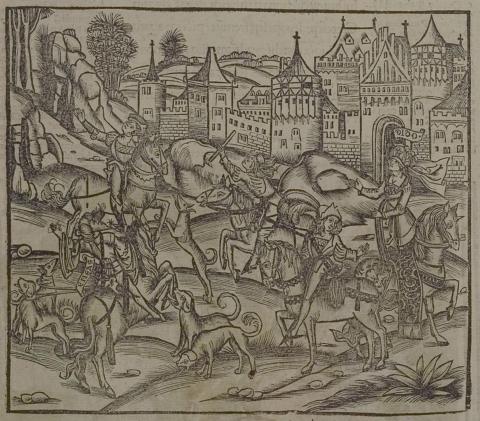

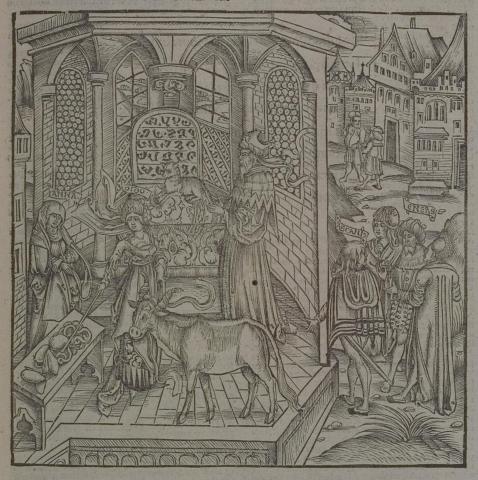
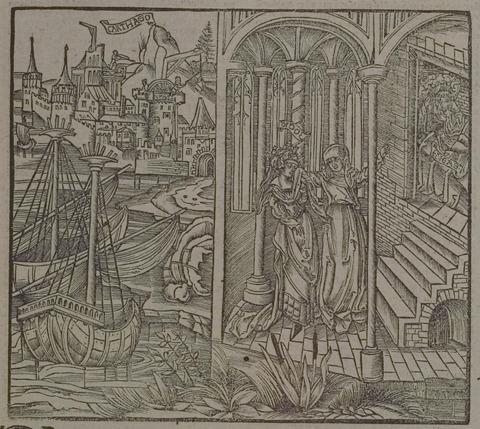
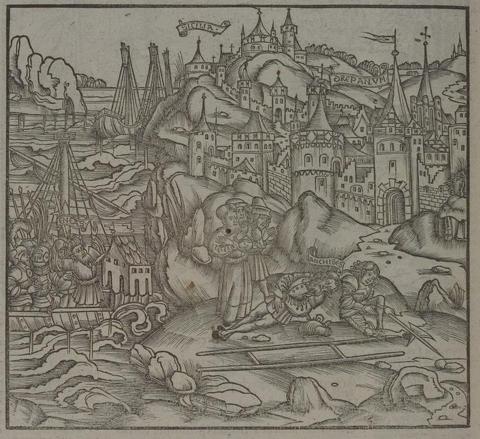
Sebastian Brant (1458-1521) was a humanist scholar of many competencies. Trained in classics and law at the University of Basel, Brant later lectured in jurisprudence there and practiced law in his native city of Strasbourg. While his satirical poem Das Narrenschiff won him considerable standing as a writer, his role in the transmission of Virgil to the Renaissance was at least as important. In 1502 he and Strasbourg printer Johannes Grüninger produced a major edition of Virgil’s works, along with Donatus’ Life and the commentaries of Servius, Landino, and Calderini, with more than two hundred woodcut illustrations. (Annabel Patterson)